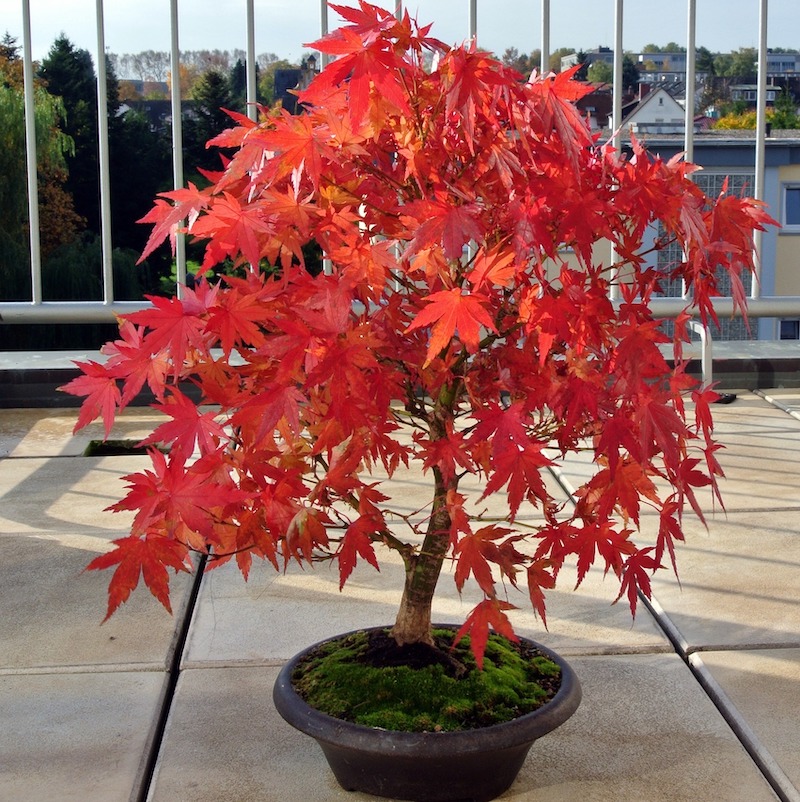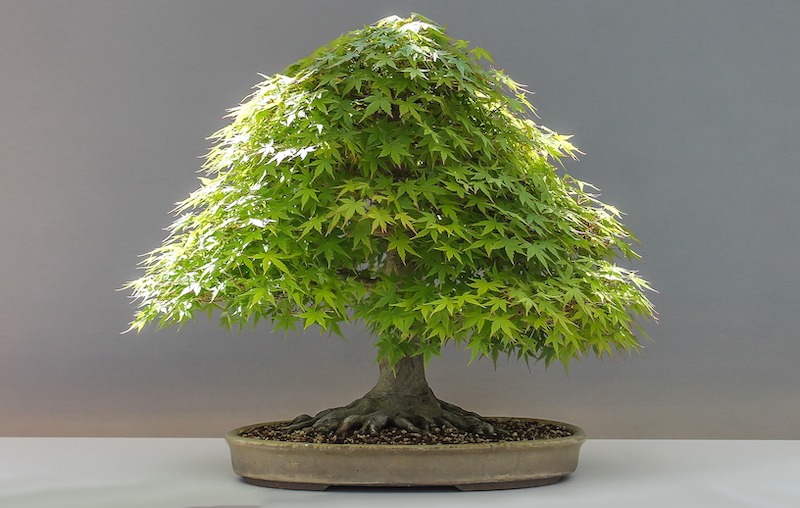Majestic red, sugar, and silver maples provide ample shade in many neighborhood yards, parks, and city street sidewalks. One can also plant them in pots both outdoors and indoors. They add class, color, and beauty to patios, decks, balconies, entryways, and porches. However, when considering growing this ornamental shade tree in a pot, people typically think of smaller varieties such as dwarf and semi-dwarf Japanese maples. Dwarf Japanese maple, for example, reaching maximum heights of only 3 to 10 feet, have highly ornamental foliage and grow slowly. Additionally, these trees are often chosen to cultivate as Bonsai trees indoors.

Planting Maple in Pots
Your two best container options for potting maples are a ceramic glazed pot and a terracotta pot. Both are heavy and durable and will do well maintaining the plant in an upright position during inclement weather. Due to the coating on the pot, a ceramic glazed vessel does better than the more porous terracotta pot in maintaining the soil moisture maple needs to thrive. Plastic and metal containers also do an excellent job of preserving soil moisture. Still, unlike ceramic and terracotta pots, they have difficulty maintaining proper soil temperatures during extreme heat and cold. Whichever pot you choose, however, make sure it has adequate drainage holes that are not easily blocked. Good drainage is vital to prevent the onset of root rot. After potting up your new maple, place the container in full to partial sun.
Best Soil For Maple in Pots
Maples prefers moist, loamy, acidic soil that drains well. Poorly draining soil can encourage the development of fungal diseases, including root rot. Amend average potting soil with perlite or compost to lighten the soil texture. Also, ensure the pot has adequate drainage holes that are not blocked by clumps of soil. To help maintain soil moisture during the summer heat, add a thin layer of mulch to the surface of maple’s soil.
Caring For Maple in Planters
Potted maple trees provide bursts of color to balconies, patios, porches, entryways, and decks. Container trees will need more watering during the summer and more protection over the winter than trees planted in-ground. Maple trees can also be grown indoors if provided adequate light, moisture, soil, fertilizer, and overwintering care.
Watering Maple in Pots
Water the container one to two times per week. However, ensure that excess water quickly exits the pot through the drainage holes. While maple prefers consistently moist soil, this plant does not like its roots sitting in waterlogged soil. Conduct a moisture check before watering. When the top 2 to 3 inches of soil are dry, water. If not dry, then wait a few days before testing again.
Fertilizing Maple in Pots
Water washes away soil nutrients in pots typically faster than in the ground, so it will be necessary to fertilize your potted maple tree. Japanese maple does not require nitrogen-heavy fertilizers, so feed this ornamental during early spring with a balanced (10-10-10) slow-release fertilizer.
Winter Care For Maple in Pots
During the winter months, move pots to a protected location, away from heavy snow drifts and harsh winds. For maples at the lower end of their growing range, move the pot to an unheated room that’s temperature never falls to 32 degrees F or below. A basement, garage, shed, or barn are good options. Heat and light are unnecessary. If maple is large, place the pot on a plant caddy to make it easier to move from outdoors to indoors. Water well before moving it to its indoor winter location.

Growing Maple Indoors
Dwarf Japanese maples, reaching maximum heights of 3 to 10 feet, can be grown inside homes and apartments. Plant these trees in a ceramic glazed or terracotta pot filled with moist, loamy, acidic, well-draining soil. Ensure the pot has adequate drainage holes. Place the pot in a sunny location. A room with a south-facing or east-facing window is a good choice. This striking ornamental will go dormant during winter, so be prepared to move it to an unheated shed or garage to mimic its normal outdoor conditions.
 |
Author Suellen Barnes - Published 4-28-2023 |
